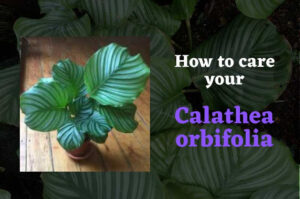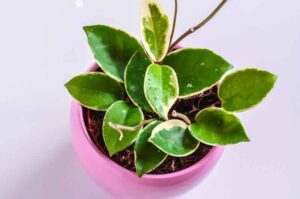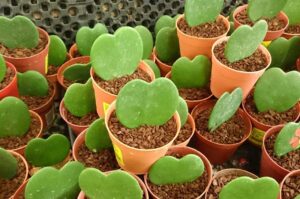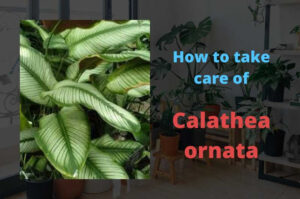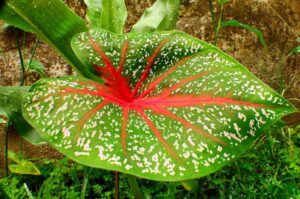A complete care guide to Rhaphidophora tetrasperma
Rhaphidophora tetrasperma- care tips

Rhaphidophora tetrasperma is a quick-growing vine that is very easy to maintain can be planted indoors and has attractive fenestrated leaves. Its split leaves, striking deep green foliage makes it one of the finest indoor plant that you will always want to have in your collection.
This plant is often confused as Monstera deliciosa due to its close resemblance with the same, but both are different plants.
Due to its similarity in appearance with the Monstera deliciosa, it is also called Mini Monstera. The basic difference between these plants is that the Rhaphidophora tetrasperma has relatively smaller leaves and no edible fruits.
Rhaphidophora tetrasperma is also confused as another plant of its family i.e. Philodendron species. Therefore, this plant is also called as ‘split leaves Philodendron’ or ‘Philodendron Ginny’.
Complete details about Rhaphidophora tetrasperma, the Mini Monstera
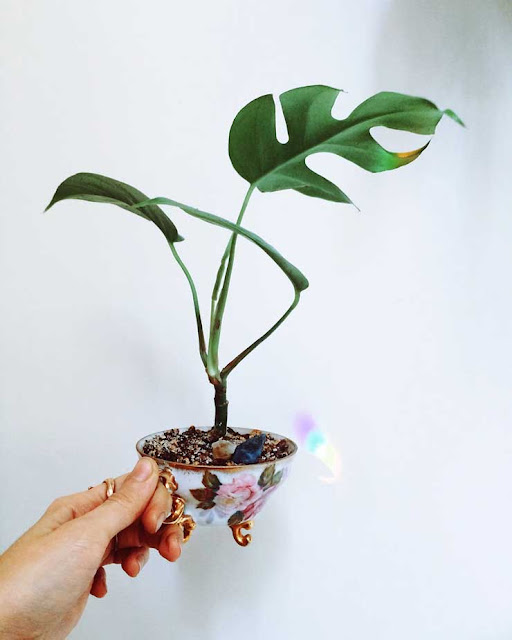
- Botanical name- Rhaphidophora tetrasperma
- Common name- Mini Monstera, Monstera ‘Ginny’, Philodendron ‘Ginny’
- Family- Araceae
- Origin- Southern Thailand and to Malaysia
- Plant type- Tropical indoor vine
- Light requirement- Plant require bright indirect sunlight
- Soil requirement- This plant needs well-draining soil with good organic matter and it should able to hold the moisture for a longer period of time.
- Water requirement- The plant loves moist soil but soil should not be too wet and soggy, and there should not be water stagnation.
- Temperature- Plant does well under 600F (150C) to 850F (290C). A little bit warmer temperature will do good for the plant.
- Humidity- The plant loves humid conditions. 40 to 50% humidity is ideal for the plant.
- Repotting- Plant needs to be repotted every year.
- Propagation- This is done by stem cutting.
- Toxicity- Plant is harmful to dogs and cats.
Rhaphidophora tetrasperma Care tips
Here is a completer care guide about how to grow Mini Monstera i.e. Rhaphidophora tetrasperma.
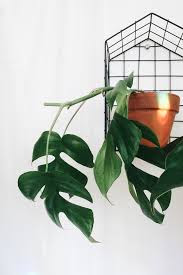
Light requirement-
As the plant is originated from the tropical jungles to mimic its natural habitat condition, you have to provide bright diffused sunlight. Under such light conditions, your Mini Monstera will grow happily.
Bright to medium indirect sunlight will do the work for you, while the plant will hesitate to grow if placed under direct sunlight for a longer period of time. It will have a scorching effect on the leaves. However, exposure to direct sunlight for one to two hours a day will accelerate the growth rate of Rhaphidophora tetrasperma.
You can read our article on how excess light can harm your plant by CLICKING HERE.
An east-facing window is ideal for this plant. Keep your Monstera Ginny near an eastern-facing window and it will provide direct sunlight for few times during the morning hours and at the rest of the day, the plant will get bright indirect light.
Never forget to turn the plant in a regular interval so that every part of the plant will get uniform light and there will be no leggy growth. It will give you a uniform, eye-catchy Philodendron Ginny.
Soil requirement
Rhaphidophora tetrasperma requires soil with good organic matter and good drainage. As waterlogging condition causes the root rot in Mini Monstera. To prepare a proper potting mix for this plant, you can take normal garden soil and mix it with organic compost or vermicompost. You can add perlite or pumice to increase the porosity of the soil and peat moss or cocopeat to improve the water holding capacity of the soil.
Organic matter in the soil provide sufficient nutrient to the plant and it also improves the physical condition of the soil. It increases the drainage capacity of the soil, which also enhances root respiration.
The article about how to make potting soil for indoor plants can help you a lot to choose the right potting soil for your plant.
Soil should be only moist, but not too wet or soggy for the proper growth and development of the Philodendron Ginny plant.
Temperature-
As we all know in the tropics the plants survive well at relatively high temperatures, but it is not true in the case of Rhaphidophora tetrasperma. It does well under a temperature range of 600F (150C) to 850F (290C). The ideal temperature is around 230C i.e. 730F.
The plant will have a luxurious growth during the spring and summer, but the growth will slow down as the winter approaches. The Mini Monstera never likes chilling temperatures.
As the summer arrives the plant resumes its growth.
Humidity-
Like all typical tropical plants Rhaphidophora Tetrasperma also simply loves humid places. Ideal humidity is around 50 to 60%. It will also keep the plant fresh and lush.
Higher humidity levels also keep the potting soil moist, and it will not dry completely, which is an ideal condition for all the tropical plants.
You can place this plant near your bathroom or kitchen, as these places have relatively higher humidity. You can also mist the plant regularly in order to keep the surrounding environment humid. A pebble tray can also do the job for you.
If you do not want any headache, you can invest in a good humidifier.
Water requirement-
Rhaphidophora tetrasperma loves moist soil always, but too wet and soggy soil will make the plant worried and to you also. The plant can withstand underwatering up to some extent, but it will never tolerate overwatering. The leaves will turn yellow.
There is not any thumb rule or certain time interval to water this plant-like once a week or twice a month, or like that. You yourself have to determine when the plant is thirsty and supply water accordingly.
To check the water requirement, you can touch the upper one inch of the soil, if it is dry then water immediately. If it is moist, then no need for watering, check for the same on the next day.
Here are some points you should consider regarding the water requirement of your Monstera Ginny
1. Pot size-
Choose a proper pot size for your plant. If you have taken a large pot in order to prevent repotting again and again, then think twice. A bigger pot will contain more soil, and it will take more time for the water to drain out completely. It may create a waterlogging condition around the root zone of the plant. So, take a small-sized pot like the diameter having 10”.
2. Make proper drainage holes-
After you have chosen your pot, then you have to ensure that there are sufficient drainage holes to escape the excess water easily.
3. A good potting soil-
Your potting soil should be prepared in such a way that it would hold moisture for a longer period of time but does not make waterlogging conditions around the root. You can add coco peat to increase the water holding capacity of the potting mix.
Learn how to make coco peat at home by CLICKING HERE.
4. Provide water to the plant according to its needs, not according to a time table-
As the season changes the water requirement of the plant will also change. During the summers the plant needs more water, hence you have to water more often. In the winter the growth rater of the plant is very slow and hence the water requirement is also very slow. In this way, you have to check the water requirement of the plant and apply water accordingly.
Fertilizer
Organic fertilizer is best for any plant, so the case is here. It provides necessary nutrients to the plants as well as it provides good physical condition to the soil. Vermicompost will also do the work for you.
Talking about the inorganic fertilizer, you can use general-purpose balanced fertilizer as per recommendation by the manufacturer. If you can use slow releasing fertilizer, then you do not have to fertilize the plant for the next 3 to 4 months.
You can make fertilizers at home also to prevent the use of chemical synthetic fertilizers.
Never try to overdo with the fertilizer, it is harmful to the plant. Always apply the fertilizer a few inches away from the plant. The root or stem must not come in direct contact with the harmful chemical fertilizer. It may cause the roots to burn.
Repotting-
The plant is needed to be repotted after one year of growth, otherwise, the plant will be root bound, and the growth rate will be slower.
- For repotting you have to choose a 1 to 2” bigger size pot.
- Prepare the potting mix.
- Take out the plant from the old pot, and remove the soil adhered to the root gently.
- Check for any root rot or any diseased root
- Remove it using a sterilized knife or blade.
- Plant the Rhaphidophora tetrasperma in the new pot and fill it with a newly prepared potting mix.
- Water the plant.
Pest-
The only pest problem in this plant is the spider mites. They are tiny sap-sucking insects. If once infested they will suck the sap of the leaves and make brown little patches on the leaf surfaces.
You can control them using neem oil.
Rhaphidophora tetrasperma diseases
The major disease of this plant is the root rot, which is a consequence of overwatering. A prolonged waterlogging condition leads to the rotting of the root, which also leads to the yellowing of the leaves.
To control the root rot you have to take care of irrigations applied to the plant, and check the roots at the time of repotting.
Rhaphidophora tetrasperma Propagation
Propagation of Rhaphidophora tetraspermais quite an easy task to do. You can simply propagate your Mini Monstera using stem cutting.
Here is the process you need to follow.
- Select a healthy cutting along with a node and 2 to 3 leaves and cut it.
- Place the cutting in a glass of water or you can use moist potting soil (keep the node under the soil surface).
- The root will start to form at the nodes.
- As the root develops to 1 to 2 inches long, you can move it to a proper pot and grow the full plant.
FAQ
Is the Rhaphidophora tetrasperma is toxic to cats, dogs, or babies?
Like other species of Araceae family, the Rhaphidophora tetrasperma also has calcium oxalates crystals in its sap. It is harmful to pets and humans also. It may cause oral irritation, vomiting digestive tract infection to the dogs and cats. Small babies if ingested they also suffer from vomiting, oral or digestive tract infection.
Where to buy Rhaphidophora tetrasperma?
You can check for Rhaphidophora tetrasperma at your local nurseries or plant shop. If you find it then well and good, if not, you can google it.
What is the difference between Rhaphidophora tetrasperma and Monstera deliciosa?
Both Rhaphidophora tetrasperma andMonstera deliciosa belongs to the Araceae family, but both are different species. Rhaphidophora tetrasperma is comparatively a smaller plant than Monstera deliciosa. It has smaller leaves and it does not produce edible fruit.
Why the leaves of my Rhaphidophora tetrasperma are turning yellow?
Leaves generally turned yellow due to overwatering.
Why the leaves of my Rhaphidophora tetrasperma are curling?
It may be due to overfertilizing or low humidity. Apply fertilizer according to the prescribed dose and maintain a proper humid place for the plant to grow well.
Conclusion
With a little bit of extra care and precaution, you can grow a fresh healthy Rhaphidophora tetrasperma plant at your home. So don’t delay go for it.
Happy gardening.

